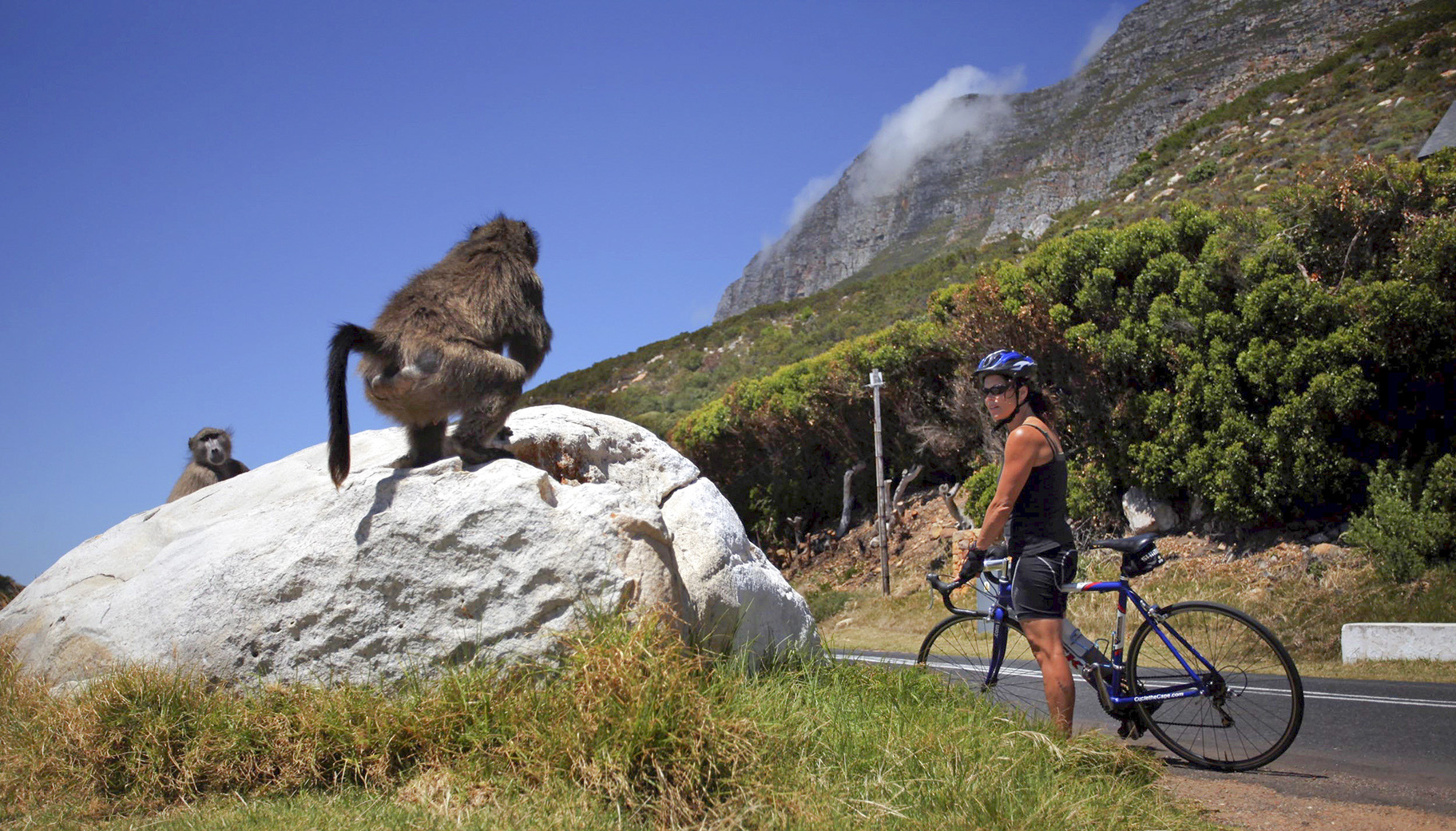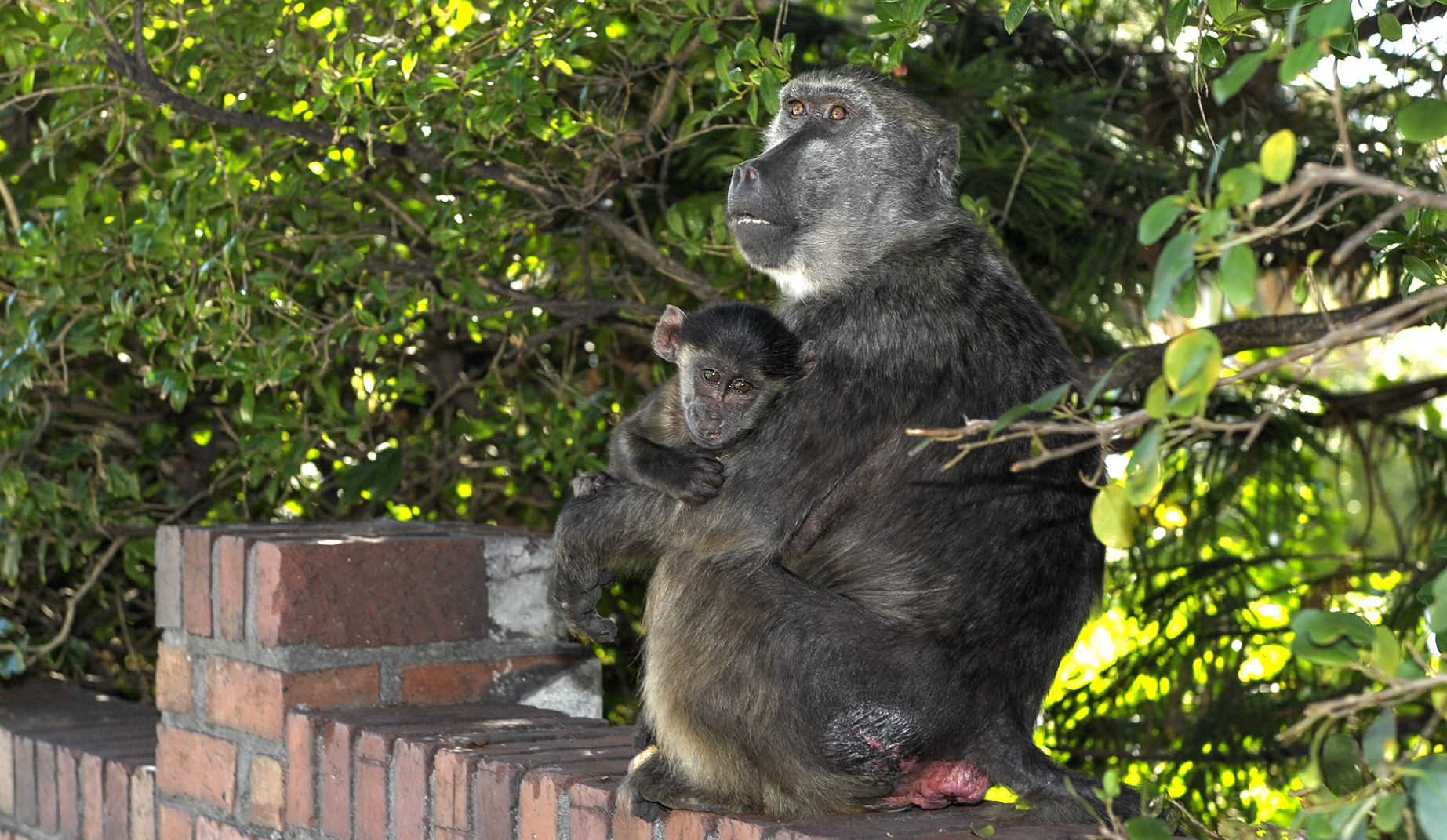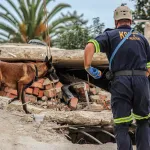BABOON CONTROL
Draft Cape Peninsula Baboon Strategic Management Plan slammed by activists as public comments deadline looms

The ever-growing urban sprawl has brought humans and primates into greater contact over the years. The draft plan could define a new era of baboon conservation, but local stakeholders have raised concerns about its efficacy and constitutionality ahead of Friday’s deadline for public comments.
The stated objective of the draft Cape Peninsula Baboon Strategic Management Plan, issued for public comment in January, is the “sustainable management of the baboon population of the Cape Peninsula”. However, community members and activists have called the plan’s efficacy — and even constitutionality — into question ahead of the deadline for comments on Friday, 31 March.
The plan was produced by the Cape Peninsula Baboon Management Joint Task Team, comprising representatives from the three spheres of government: SANParks (national government); CapeNature (Western Cape provincial government); and the City of Cape Town (local government).
According to the joint task team, there are currently about 630 baboons in approximately 16 troops on the Cape Peninsula, stretching from the Cape of Good Hope section of the Table Mountain National Park to Constantia.
“The draft plan proposes a new sustainable approach with the three authorities… leading and supporting the implementation of the plan. The draft plan is the result of the collective effort of the Joint Task Team and is informed… by research, international best practice and operational experience,” said Dr Luthando Dziba, spokesperson of the task team.
He added that the plan was also informed by input from stakeholders at a roundtable event hosted by Minister of Environment, Forestry and Fisheries, Barbara Creecy, on 7 June 2022.
However, the Cape Peninsula Civil Conservation (CPCC) group, a nonprofit, claims that procedural processes were “flaunted” during the development of the plan, rendering it “procedurally unfair and therefore unconstitutional”. A key concern of the organisation is that there is no signed memorandum of agreement (MOA) between the parties involved in the joint task team.
“The non-existence of a MOA is a critical oversight, in that there is no clarity amongst the three spheres of government [with regards to] inter alia matters involving policy, legislative issues, resources, funding and budget, capacity, etcetera,” stated the CPCC. “Without the MOA in place, the work done by the [joint task team] would somehow have to be ratified retrospectively.”
The CPCC further stated that the public participation process for the draft plan lacked “real engagement”, as meetings for stakeholders held during work hours or online were inaccessible to working and under-resourced members of the public.
Lynda Silk, chairperson of the nonprofit, said that the plan did not “represent the voices of the communities”. She added that while the CPCC took issue with certain aspects of the plan itself, its primary concern was the manner in which the plan was developed.
“We have the right to demand processes which are lawful, transparent and accountable,” she said.
The CPCC claims the process of developing the plan was not transparent, with the joint task team failing to make the minutes of their meetings about it accessible to the public.
“With the increased urban sprawl… there will be future need in biodiversity issues for similar joint task teams to address specific issues which will arise. We envision that this process will form the blueprint for future biodiversity issues to follow suit, and therefore it is especially crucial that the correct framework is created now,” stated the CPCC.

A cyclist watches baboons close to Cape Point, Cape Town. (Photo: Gallo Images/Sunday Times/Marianne Schwankhart)
The organisation’s demands, among others, are that:
- The joint task team makes the MOA public, and that the MOA be signed in order to “legitimise their actions”;
- The draft strategic management plan be voided;
- The joint task team goes “back to the drawing board” and drafts a strategy document in consultation with the stakeholders and the public; and
- A management plan be drafted based on the strategy document, also in consultation with the stakeholders and the public.
The CPCC has written to both Geordin Hill-Lewis, Cape Town mayor, and Barbara Creecy, minister of environment, forestry and fisheries, about their concerns. Receipt of the letters has been acknowledged, but no response has been provided as yet.
Dziba said that comments received between 27 January and 31 March would be used to further complement and refine the draft plan. He noted that the joint task team hosted a public information day in Tokai, Cape Town, on 3 March that was “very well attended” and allowed for the submission of proposals.
“We encourage the CPCC, like all other stakeholders and interest groups, to make use of this commenting period to submit their comments, and more importantly, to also make proposals and suggestions on how to improve what they feel is lacking in the current draft,” he said. “We encourage and welcome detailed proposals, as the [joint task team] is very well aware that we do not have all of the answers and that we want as many people as possible to participate in this collaboration.
“As for the MOA, it is anticipated that this document will be signed by all three parties before the draft Baboon Strategic Management Plan is finalised.”
An effective transition?
David Gaynor, a local primatologist, raised the concern that the draft strategic management plan lacked actionable elements.
“I think the action plan is just a summary of people’s ideas, but for a plan, there’s got to be action and commitment. And I don’t see any actions or commitments, so I’m not sure whether anything will come out of it,” he said.
The plan states the joint task team’s intention to achieve the following outcomes:
- “A wild baboon population is sustainably managed and conserved on the Cape Peninsula;
- “Authorities at national, provincial and local level provide for regulatory requirements and the promotion of compliance and law enforcement;
- “Stakeholder engagement and partnerships enable local solutions and action to encourage baboons to remain in natural areas and reduce human-baboon conflict;
- “Effective waste management in the natural, rural and urban areas ensures that baboons are unable to access human-derived foods;
- “Stakeholder communication, education and awareness on all aspects of baboon management for residents, businesses and tourists enable the conservation and well-being of baboons and the mitigation of human-baboon conflict;
- “Infrastructure and services are designed and operated to minimise impacts on baboons; and
- “Adaptive management of the baboon population is informed by continuous monitoring, evaluation, scientific research and stakeholder feedback.”
Speaking to Maverick Citizen at the stakeholder engagement meeting on 3 March, Dziba said, “If you look at the plan, especially the implementation component where we’ve actually articulated the activities, the institutions that are responsible and the timelines, basically the expectation is that once the plan is signed, the institutions will take responsibility for the areas they’re supposed to lead.
“I can’t comment specifically on the funding upfront… What is going to be, eventually, in the final plan is something that we’re still finalising… but I think what is critical is that if we take this very collaborative approach to working going forward, then one would expect that there should be commitment to put our skin in the game, all of us as the different agencies, including working together to mobilise resources to actually implement these [objectives].”
The current programme for managing baboons, known as the Urban Baboon Programme, is run by NCC Environmental Services, a service provider appointed by the City of Cape Town. The programme, which includes the use of rangers to monitor baboons and keep them out of urban areas, is due to come to an end on 30 June.
A key concern of stakeholders is that there is no definite transition plan in place to bridge the gap between the end of the Urban Baboon Programme and the effective implementation of the draft Baboon Strategic Management Plan, according to Lorraine Holloway, founder of Baboons of the South.
“I believe it’s essential that the [NCC] contract is extended from 1 July because we’re nowhere near the finalisation of a long-term baboon management plan,” she said, emphasising the need to continue reducing attractants, implementing bylaws and spreading education about baboons during the transition between plans.
Gaynor warned that an abrupt halt to the ranger programme for baboon monitoring would result in baboons entering residential areas more frequently, and more baboons being killed.

Mother and baby from the Waterfall baboon troop, Simon’s Town. (Photo: Joyrene Kramer)
“Baboon activists will take the city to court, but in the meantime, the whole system has totally collapsed and baboons have been killed, and it’s going to be more difficult and more costly [to address],” he said. “I think the important thing is that the bridging solution has to come quite soon.”
Human violence against baboons has been at the forefront of stakeholder discourse in recent months. In the space of a week at the end of February, two adult male baboons needed to be put down by the Cape of Good Hope SPCA. Both had suffered numerous pellet gun wounds, and one had been blinded by a pepper round fired into his face at close range.
Read more in Daily Maverick: Cape of Good Hope SPCA ‘sickened’ after second wounded baboon is euthanised in a week
Chief inspector of the SPCA, Jaco Pieterse, said that a transition plan was important as the safety of both baboons and local residents should be prioritised. He declined to comment on the contents of the draft strategic management plan while the SPCA’s review of the plan was being finalised, but stated that the organisation was not engaged during the development of the plan.
In the draft plan, it is stated that 54.2% of all baboon deaths were human-induced in 2022. By contrast, the percentage of human-induced baboon deaths was reduced to 14% between 2013 and 2019, “while the full set of aversion methods and tools were being implemented by the authorities”.
Dziba told Maverick Citizen that the City of Cape Town was looking into a transition plan for baboon management, but that this plan required a formal procurement process.
“There is a recognition that… the current programme cannot end abruptly, because by the time June comes — which is basically about the time when the [draft] plan would have just been approved — most of the items that we have to implement in the plan would not be ready for implementation,” he said. DM/MC





















The outcome is simple. Some people can lock homes and afford a baboon alert program to notify residents to protect home invasions. The baboons will migrate to softer targets to people who are not vigilant. There are such people. Baboons will get accustomed to eating processed food. They will become a nuisance and may also become aggressive when threatened. They will inevitably attack humans and somebody will be injured. The humans will retaliate the the baboons will be injured and/or killed.
Baboons were not give an opportunity to determine if they like humans around them. Cars late at night. Night lights on the structures humans build disturbing their peace. I am sure if they could speak they would say voetsack. Humans a baboons cannot live together, period. So, the solution is 1 of 2. Humans move out OR humans move baboons further up the mountain, away from humans.